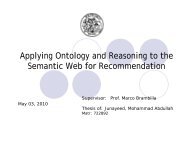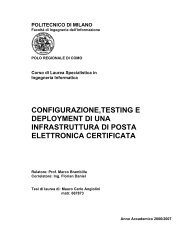Thesis full text PDF (in Italian) - Politecnico di Milano
Thesis full text PDF (in Italian) - Politecnico di Milano
Thesis full text PDF (in Italian) - Politecnico di Milano
You also want an ePaper? Increase the reach of your titles
YUMPU automatically turns print PDFs into web optimized ePapers that Google loves.
2.4.1 Measurements and analysis of onl<strong>in</strong>e Social Networks Thanks to the popularity of some onl<strong>in</strong>e social network that provides a powerfulmeans of shar<strong>in</strong>g, organiz<strong>in</strong>g, and f<strong>in</strong>d<strong>in</strong>g content and contacts, it was possible tostudy the characteristics of the social network graphs at large scale.The analysis has been done tak<strong>in</strong>g <strong>in</strong>to considerations publics data obta<strong>in</strong>ed from<strong>di</strong>fferent social networks (YouTube, LiveJournal, Flickr and Orkut), this due tothe fact that data gathered from multiple sites enables to identify commonstructural properties [17].One of the objectives was that to try to understand if the study of the socialnetwork structure, might lead to algorithms that could detect trusted or <strong>in</strong>fluentialusers, much like the study of the Web graph led to the <strong>di</strong>scovery of algorithms forf<strong>in</strong>d<strong>in</strong>g authoritative sources <strong>in</strong> the Web.An important aspect observed, was the high degree of reciprocity <strong>in</strong> <strong>di</strong>rected userl<strong>in</strong>ks, lead<strong>in</strong>g to a strong correlation between user <strong>in</strong>degree and outdegree,provid<strong>in</strong>g some <strong>di</strong>fficulties <strong>in</strong> identify<strong>in</strong>g valid <strong>in</strong>formation through the analysisof the only structure of the network (this <strong>di</strong>ffers from content graphs like thegraph formed by web hyperl<strong>in</strong>ks, where the popular pages, “authorities”, and thepages with many references, “hubs”, are <strong>di</strong>st<strong>in</strong>ct).The analysis has highlighted that onl<strong>in</strong>e social networks conta<strong>in</strong>s a large, stronglyconnected core of high-degree nodes, surrounded by many small clusters of lowdegreenodes, suggest<strong>in</strong>g that high-degree nodes <strong>in</strong> the core are critical for theconnectivity and the flow of <strong>in</strong>formation.26


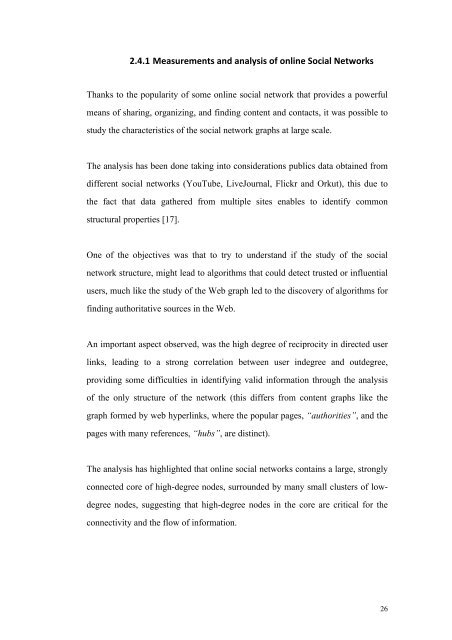
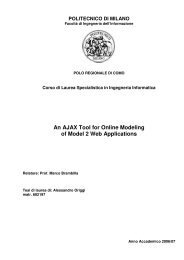
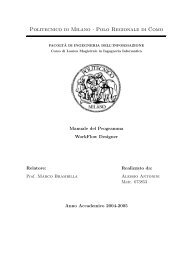
![Full text preview of the chapter [PDF] - Politecnico di Milano](https://img.yumpu.com/44021924/1/180x260/full-text-preview-of-the-chapter-pdf-politecnico-di-milano.jpg?quality=85)
